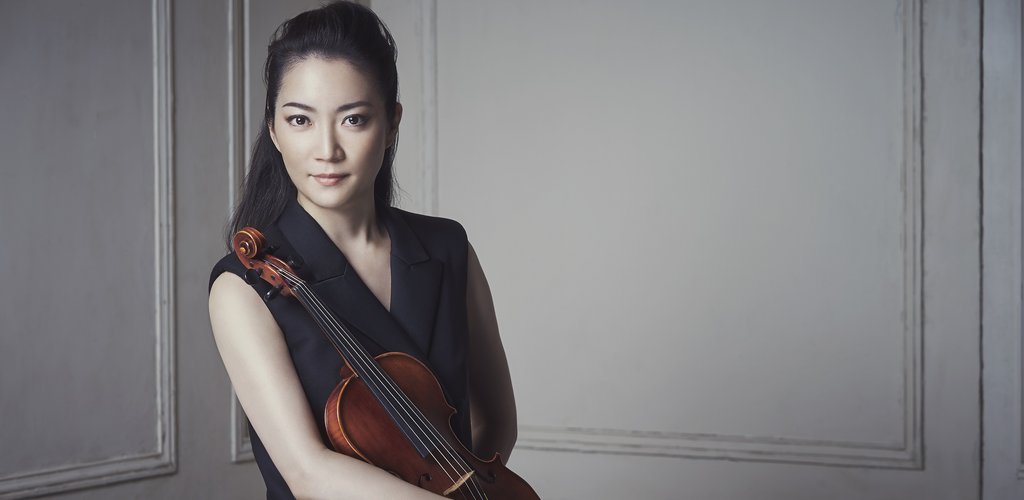At the invitation of the Budapest Festival Orchestra, the great violinist performs Saint-Saëns’s dazzling B minor Violin Concerto. We spoke with her about her extraordinary instrument, fidelity to the score, and the role of competitions. Akiko Suwanai will play at Müpa on October 4, 6, and 7.
You won some of the world’s most prestigious competitions at a very young age. Looking back now, what do you think about competitions in classical music? Can they truly measure musical greatness, or do they serve another purpose?
I participated in international competitions between 1988 and 1990, so it was a very different era compared to today. By the time I was 15, I had already won all the major competitions in Japan, even though I hadn’t studied abroad yet. For me, competing internationally as a teenager was just as stimulating and educational as studying abroad would have been. Also, for many of us Asian musicians, with very few exceptions, it was nearly impossible to begin a professional career without first gaining recognition through international competitions. Winning recognition at those events was really the entry point—it opened the door to everything that followed. So, I believe competitions cannot truly measure musical greatness in its entirety. We must always pursue artistic growth far beyond the competition stage.
You currently perform on a 1732 Guarneri del Gesù violin. What makes this instrument unique for you? Do these legendary instruments live up to their reputation, or is their magic more subtle?
A great instrument can actually teach you a lot. I’ve been fortunate to spend over 30 years of my life with exceptional violins, playing them every day. I began performing on the 1732 Guarneri del Gesù around the time the pandemic began. Prior to that, I had spent more than two decades playing a Stradivarius. What makes the del Gesù fundamentally different from a Stradivarius is this: a Stradivarius produces a beautiful sound quite effortlessly—but precisely because of that, you must be extremely sensitive and careful not to disturb or diminish that natural beauty. A del Gesù doesn’t give its sound so easily. But if you keep searching for your ideal tone, it reveals colors and characters you never imagined. Even with pieces I had played many times before, this violin allowed for completely new interpretations and expressive possibilities. So yes, these legendary instruments do live up to their reputations—but their magic lies in how they challenge and inspire the musician to grow.
You are performing Saint-Saëns’s 3rd Violin Concerto with the Budapest Festival Orchestra. It is a dazzling Romantic masterpiece, full of brilliance and charm. What are the challenges of this concerto for the performer?
This concerto was dedicated to Pablo de Sarasate. As you may know, Saint-Saëns composed many brilliant works for the violin—such as the Introduction and Rondo Capriccioso—and Sarasate himself was a virtuoso who captivated audiences of his time. Interestingly, Sarasate’s performance of Lalo’s Symphonie espagnole later inspired Tchaikovsky to compose his own violin concerto. For me, the challenge is showing off both the unique violin writing and the larger shape of the piece in a way that really captivates the audience. It demands a high level of virtuosity, of course, but at the same time, it’s essential to express the elegance and subtle humor that are so characteristic of French music. The real challenge is balancing brilliance with refinement—that’s what makes the piece so rewarding to play.
What does it mean for you to make a piece “your own”? Does this involve putting your personality into the music, or is it more about discovering what is already in the score?
Every performance is shaped by the instrument, the hall, and the musicians I’m playing with. As performers, it is our role to give life and breath to the music. To do that, we need not only the ability to truly understand and interpret the score, but also to draw upon our full range of musical knowledge and experience. I always strive to bring out the best possible interpretation for that specific moment in time.
Back in 2001, you recorded a wonderful album of Dvořák and Sarasate concertos with the Budapest Festival Orchestra. How do you feel about performing with them again?
It’s always a real honor to play with the Budapest Festival Orchestra. I have the deepest respect for their dedication to music, and I’m genuinely looking forward to making music together again.
In your view, what qualities make a symphony orchestra truly outstanding?
I believe that many complex factors contribute to making a truly outstanding symphony orchestra. The vision and leadership of the music director, the character and acoustics of the concert hall they call home, the orchestra’s history, and of course, the individual and collective skill of the musicians—all of these elements play a role. That’s why, just as we performers grow through touring and playing in different environments, I believe that an orchestra is also shaped and enriched by the experience of performing for diverse audiences around the world.
Program: Orchestral concert: Saint-Saëns, Tchaikovsky

Orchestral concert: Saint-Saëns, Tchaikovsky
Suwanai, Martín

Orchestral concert: Saint-Saëns, Tchaikovsky
Suwanai, Martín

Orchestral concert: Saint-Saëns, Tchaikovsky
Suwanai, Martín

